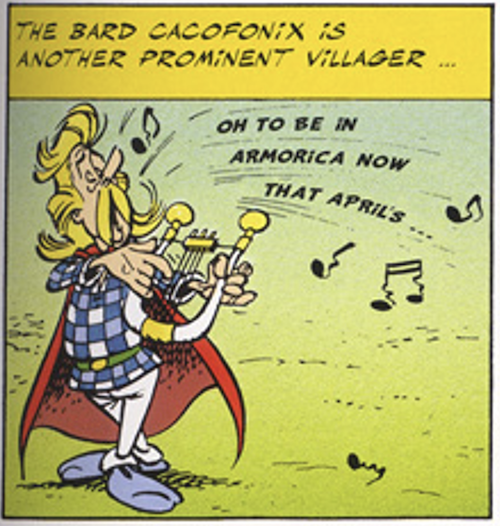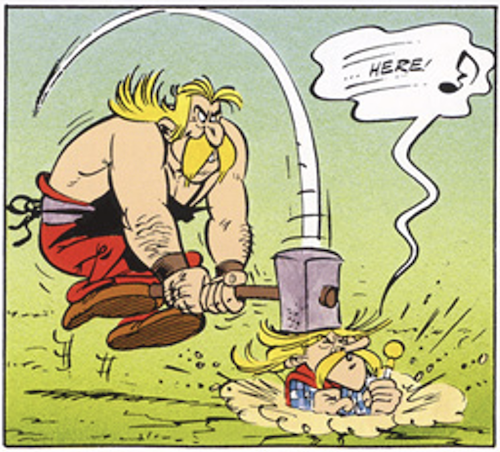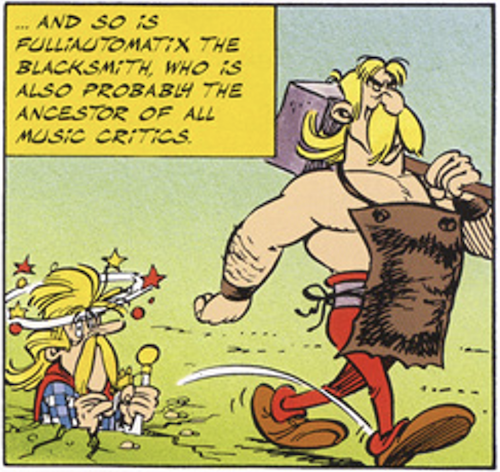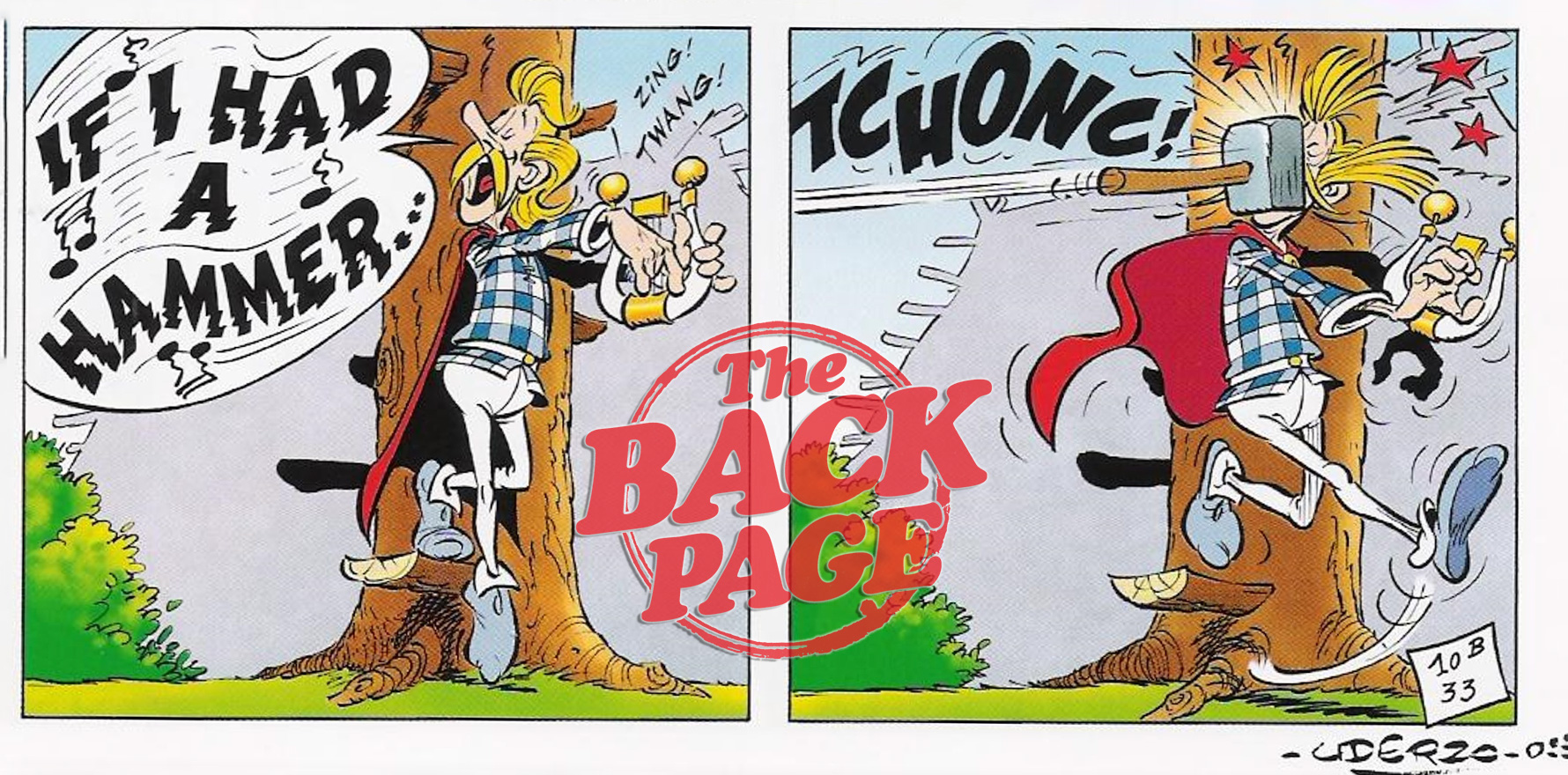Don’t listen to the critics, say researchers – keep playing through the pain.
Your Back Page correspondent grew up with Asterix, the French comic books from the 60s and 70s chronicling the resistance of one small village of indomitable Gauls against the Romans.
Readers will remember that as nearly every adventure comes to a happy close, and the village gathers for a banquet to celebrate yet another episode of indomitability, poet and musician Cacofonix can be seen trussed up and gagged to prevent him from harshing the vibe with one of his terrible songs.
As a musical kid, one lesson we internalised from the repeated violence against Cacofonix – who has not a single defender or fan in the village – was that bad things come to the untalented creator or performer who refuses to take a hint.
It was unexpected, therefore, to see a study out of the University of Adelaide celebrating the blond-quiffed bard’s steadfastness as a model for musicians in adversity.
“Cacofonix, like many musicians and other performing artists, is challenged by a continuous series of potential career setbacks through injury, but demonstrates uncanny resilience in the way he bounces back,” says co-author Dr Jessica Stanhope, an expert in musicians’ musculoskeletal symptoms.
“By capturing the concept of resilience, the author René Goscinny and cartoonist Albert Uderzo translate both the reality of a physical injury and the complexity of an individual’s response to an injury, into imagery that can be absorbed in seconds.”



Of course, in this case the author is dead in more ways than one (rest in peace, the beloved team of Rene Goscinny, who died in 1977, and Albert Uderzo, who died as recently as 2020).
But we cannot help thinking that this is not the lesson they intended.
The study is or will be published in the International Journal of Comic Art in a presumably forthcoming issue (we have not seen the full paper).
“In some cases,” Dr Stanhope continues, “perhaps counterintuitively, the best advice for a musician experiencing pain may be to continue playing, despite the pain. Cacofonix makes this point beautifully by picking up where he left off, no matter the severity of his injuries – which, in cartoon style, are often exaggerated crushing injuries that would kill most people.”
It must be asked here: for whom and from which perspective is this “the best advice”? For the artist? For Art itself? For society? Almost certainly not for physical or mental health.
Surely, constant injuries and pain would lower the artist’s quality of life as well as their playing standards, and being repeatedly assaulted and restrained by one’s peer group would make them a walking cauldron of mental and physical trauma?
We suspect the research group has its tongue in its collective cheek, judging from the comment of co-author Professor Philip Weinstein, a research fellow in the School of Public Health: “Despite funding mechanisms not always supporting cross-faculty collaborations, I encourage researchers to nevertheless create such opportunities wherever they can, because you never know what it will lead to!”
But as it’s more fun to take them at their word, the Back Page will now ponder seriously whether Cacofonix is the indomitable village in microcosm, or whether he is more like the foolishly stubborn Romans, who are repelled each time but keep coming back for another PAF!
If you see something that probably shouldn’t be taken too literally, send it in earnest to penny@medicalrepublic.com.au.


